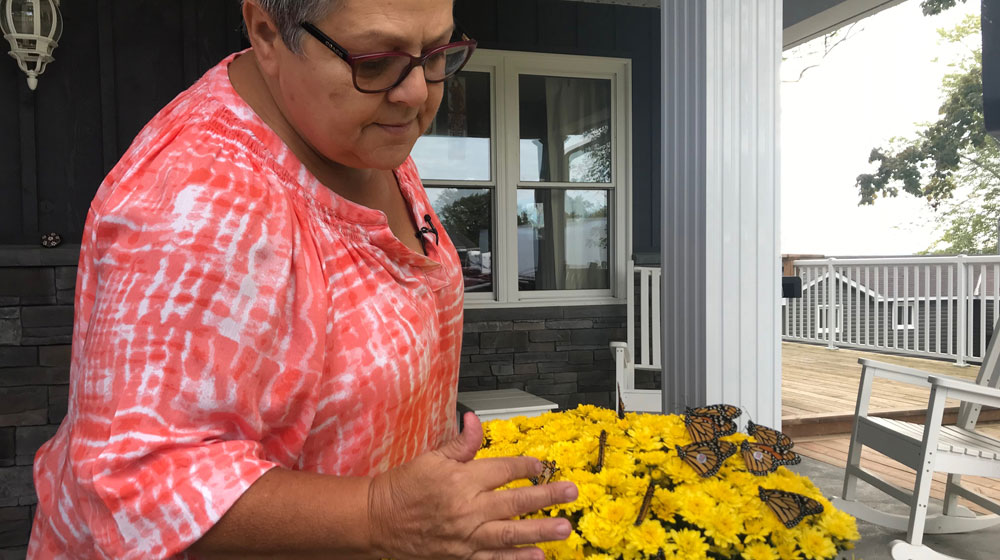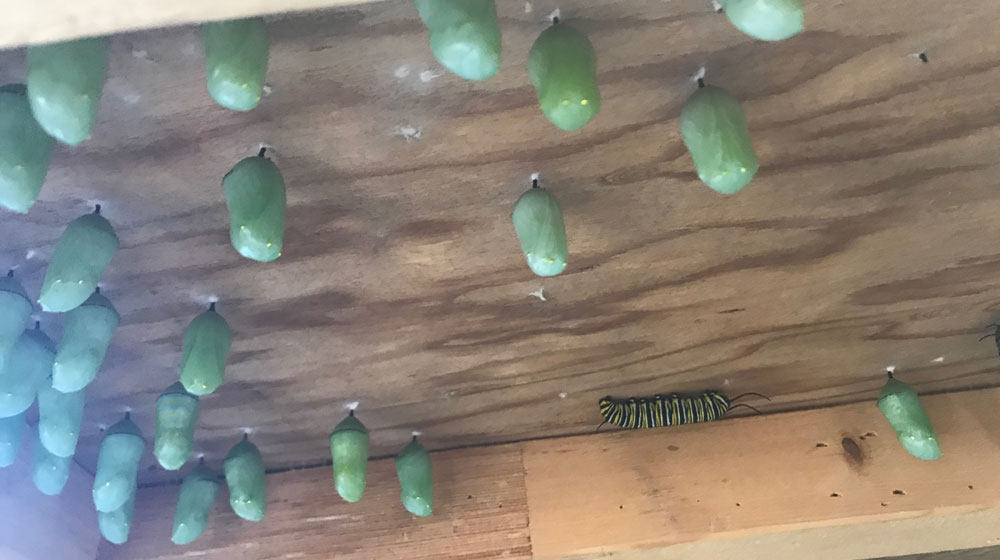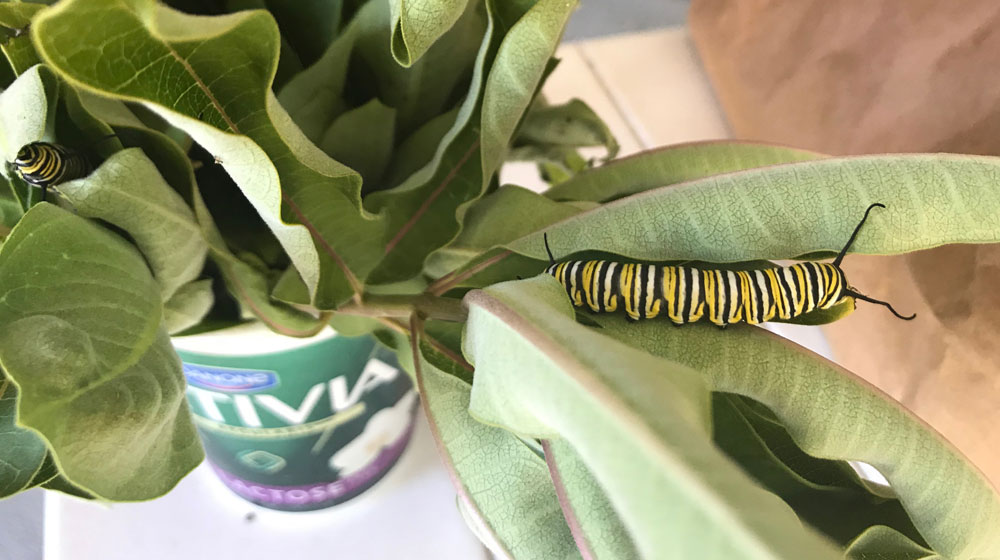It’s that time of year when those distinctive black and orange Monarch butterflies take flight on their epic migration south.
Not only do Monarchs have a marathon journey ahead of them, but they also face other challenges when they arrive in their winter home in Mexico.
Sandra and Barry Moore from Hiawatha First Nation are trying to give them a helping hand.
These butterflies have been on the decline for the past few decades du to pesticides, habitat loss, climate change and disease.
The Moores are trying to change that by taking on a project to ensure that Monarchs can hatch in a safe space.
“I saw what she had for a cage and I thought well, we’ll build a cage and we had no problem finding lots of caterpillars and eggs to put in it,” said Barry Moore. “There’s lots of them and if you can get them in the farmers field before he cuts the hay, then you can find all kinds of them, but after he cuts the hay of course, the hay bailers destroys the whole everything, the eggs, the larvae, chrysalis’s, so that generation of Monarchs is destroyed.”
(Sandra Moore tends to her Monarch butterflies. Photo: Annette Francis/APTN)
For the past few years, over a period of about six weeks, the Moores can be seen heading to the fields to collect the main source of food for their caterpillars – milkweed.
According to Sandra, they eat a lot before transforming into a chrysalis.
This year, they’ve been able to send more than 100 Monarchs on their 5,000 kilometre journey to Mexico.
“It’s like kids leaving home,” said Sandra. “It’s part relief because you don’t have to go hunting milkweed anymore, you don’t have to go out every morning in the cold and see what they’re doing, but its really sad, because it’s over.
“It’s over until next year.”
(A caterpillar crawls among the chrysalis under the Moore’s protection. Photo: Annette Francis/APTN)
Sandra said they’ve learned a lot about the orange and black species.
“This is a girl,” she explained. “There’s no black spots on the lower wings. This is a boy – see those two black spots on the lower wings, here and here, that’s a boy and as soon as these guys are warmed up enough they’ll be gone.”
There’re other educational benefits of the project as well.
“The number of people who just drop by to observe you know and the kids, the daycare, we have a daycare here and the kids come down and watch the caterpillars and put them in their hand you know it gets the next generation to get an interest,” said Barry.
(A caterpillar enjoying a feed of milkweed greens. Photo: Annette Francis/APTN)
Barry and Sandra say they’ll continue with their Monarch butterfly project for as long as it’s needed.













wonderful … never thought about the farmers fields before, always chemical destruction…this is eye opening and maybe, just maybe others could get permission from farmers to go into their fields and gather what they can of these amazing beings of beauty.